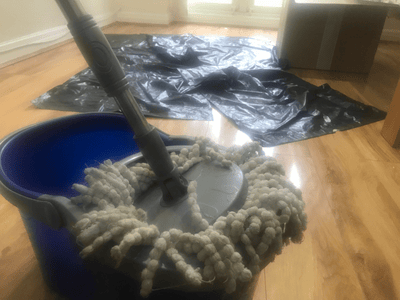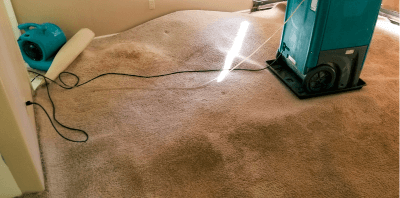
What To Do When Dealing With A Flooded House
Walking into your home to find it flooded can feel like a scene from a bad movie. Water pooling on the floors, soggy furniture, and that unmistakable damp smell—it’s overwhelming. But here’s the thing: while dealing with a flooded house is stressful, taking the right steps can make all the difference in minimizing damage and getting your home back to normal.
At Complete Flood Restoration, we’ve helped countless homeowners in San Antonio recover from the chaos of a flooded house. Whether it’s a burst pipe, heavy rainfall, or a plumbing mishap, we’ve seen it all—and we’re here to guide you through the process with expert tips that can save your sanity (and your wallet).
1. Prioritize Safety First
The first rule of dealing with a flooded house? Safety always comes first. Floodwater can pose serious risks, from electrical hazards to contaminated water. Before diving into cleanup, make sure the area is safe.
- Turn off electricity. If water levels are high or near outlets, shut off the power to your home to avoid the risk of electrocution.
- Avoid floodwater. Floodwater often contains bacteria, chemicals, or sewage. Wear waterproof boots and gloves if you need to wade through it.
- Ventilate the area. Open windows and doors to improve airflow and reduce humidity.
Remember, your safety is more important than saving a soggy couch or that area rug you loved.
2. Stop the Water at Its Source
Before you can start cleaning up, you need to figure out where the water is coming from. Is it a burst pipe? A clogged gutter? A leaking appliance?
If the flooding is due to a plumbing issue, turn off your home’s water supply immediately. If heavy rain or external flooding is the cause, do your best to divert water away from your home with sandbags or other barriers.
Pro tip: Knowing how to locate and shut off your water main valve can save you from significant damage. If you’re not sure where it is, now’s the time to find out.
3. Document the Damage for Insurance
Once the water is stopped and the area is safe, grab your phone and start snapping photos. Insurance companies need detailed documentation of the damage to process your claim.
- Take pictures of affected areas, including walls, floors, furniture, and personal belongings.
- Record videos to capture the full extent of the damage.
- Keep a list of damaged items and their approximate value.
Don’t start cleanup until you’ve documented everything. You’ll thank yourself later when the insurance adjuster asks for proof.
4. Remove Standing Water Quickly

Standing water is a ticking time bomb for your home. The longer it sits, the more damage it causes to floors, walls, and furniture—and the greater the risk of mold.
For small amounts of water, you can use a wet/dry vacuum or a mop and bucket. For larger floods, you’ll likely need professional water extraction services (that’s where we come in).
Speed is key here. Removing the water quickly can save your floors, carpets, and even your drywall. And let’s face it—no one wants to deal with squishy carpets for longer than they have to.
5. Dry Out and Dehumidify
Even after the standing water is gone, moisture can linger in your home, seeping into walls, flooring, and even the air. Left untreated, it can lead to mold growth, warped wood, and structural issues.
Here’s how to dry out your home effectively:
- Use fans and dehumidifiers. These help speed up the drying process and reduce humidity levels.
- Focus on hidden areas. Check under carpets, inside walls, and in crawl spaces for trapped moisture.
- Call in the pros. We use industrial-grade drying equipment to ensure your home is completely moisture-free.
Drying thoroughly is one of the most important steps in preventing long-term damage. Don’t rush this part—it’s worth taking the time to do it right.
6. Clean and Sanitize Thoroughly
Floodwater can leave behind more than just a mess—it often carries bacteria, dirt, and debris. Once your home is dry, it’s time to clean and sanitize everything to ensure a safe living environment.
- Throw away porous items. Carpets, mattresses, and upholstered furniture may not be salvageable if they’ve absorbed contaminated water.
- Disinfect surfaces. Use a strong disinfectant to clean walls, floors, and hard surfaces.
- Address odors. Professional deodorization can eliminate lingering smells from floodwater.
Don’t skip this step—it’s essential for restoring your home’s safety and comfort.
7. Check for Structural and Electrical Damage

Floods can weaken the structure of your home, damage electrical systems, and create hazards you might not notice right away. After cleanup, it’s important to inspect your home thoroughly.
- Look for signs of damage. Check for warping, cracks, or instability in walls and floors.
- Test your electrical system. If outlets or wiring were exposed to water, have them inspected by a licensed electrician.
- Schedule a professional inspection. Our team can assess your home for hidden damage and ensure it’s safe to live in again.
When in doubt, call in the experts. It’s better to address potential issues now than face bigger problems later.
8. Prevent Future Floods
Once your home is restored, it’s time to think about prevention. Taking steps to protect your home from future floods can save you from the stress and expense of going through this again.
Here are some practical tips:
- Seal cracks in your foundation. Prevent water from seeping in during heavy rains.
- Install a sump pump. A sump pump can help divert water away from your home in case of flooding.
- Improve drainage. Ensure gutters and downspouts are clear and direct water away from your home.
- Check your elevation and flood risk. If you live in a flood-prone area like parts of San Antonio, consider additional flood-proofing measures.
Flooding may be unpredictable, but preparation can make a huge difference.
Take Action Now to Restore Your Home and Peace of Mind
Dealing with a flooded house is no small task, but with the right steps—and the right team—you can recover quickly and effectively. At Complete Flood Restoration, we’re here to help you every step of the way, from water removal to full restoration.
If you’re dealing with a flooded house, don’t wait. Call us today, and let’s get your home back to normal. With our expertise and commitment, you’ll be in good hands—so you can focus on what matters most: getting back to your life.
Need help with flood restoration in San Antonio?
Contact Complete Flood Restoration now for fast, reliable service. We’re available 24/7 to bring your home back to life.
